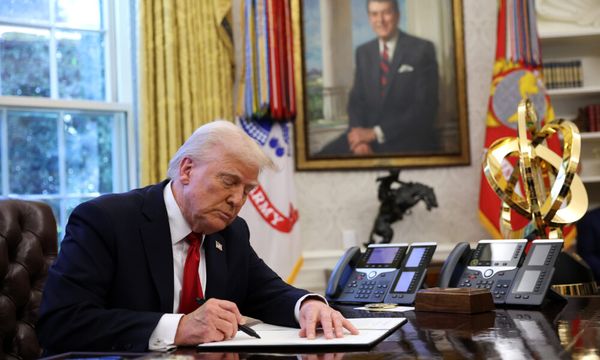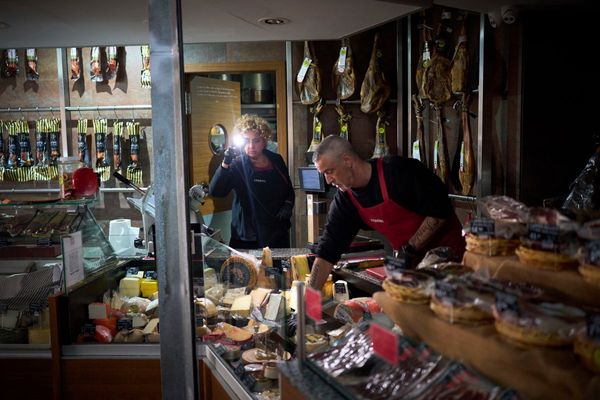
Even before van Gisbergen’s victory in the inaugural Chicago Street Race for Trackhouse Racing, there had been growing international attention on NASCAR’s top series this season.
NASCAR’s Garage 56 entry at this year’s Le Mans 24 Hours, which included international racing stars Jenson Button and Mike Rockenfeller, was well-received by fans and Button, the 2009 Formula 1 World Champion, also made his own Cup debut at the Circuit of the Americas in March.
At Le Mans, Toyota and 23XI Racing announced that 2021 Le Mans 24 Hours overall winner and former F1 driver Kamui Kobayashi would make his Cup debut in the Aug. 13 race on the Indianapolis Motor Speedway Road Course.
Joining Kobayashi in that race will be Button, van Gisbergen and fellow Supercars star Brodie Kostecki, who will make his Cup debut for Richard Childress Racing.
Kobayashi will be the first Japanese driver to start a top-level NASCAR race in over 20 years. Hideo Fukuyama was the most recent, making his final start at Sonoma (Calif.) Raceway in June 2003.
“I’m looking more forward to Indianapolis than any other race on the calendar this year – maybe carve out Phoenix. We should have some horses in that race. But it’s going to be great,” said David Wilson, president of Toyota Racing Development USA.
“We’re going to have the largest global audience. We have top management flying in from Japan, some who have never seen a NASCAR race. It’s putting Toyota and the U.S. program and TRD USA on the map and I’m proud of that.”

Wilson said the response to Kobayashi’s NASCAR debut “caught us a little bit by surprise pleasantly.”
“There’s no question it’s put some eyeballs on our sport for the first time in many instances. He is a name and a face that is known – obviously in Japan he’s huge, but in Europe because of the penetration of WEC and sportscars he also has a name,” Wilson said.
“You pair that up with what Shane did at Chicago. Without a doubt there is more interest. Without a doubt, Kamui’s excitement – it’s palpable.”
Perhaps the biggest change for Toyota to come from the interest in NASCAR from international racing stars – including those supported by Toyota – has been a change in how the OEM looks at its driver assets and their futures.
“It has helped open a dialogue that we haven’t had in the past,” Wilson explained. “The way that Toyota has managed motorsports globally is what I refer to as a decentralized model. The new Toyota president Koji Sato recognizes the North American marketplace from a motorsports perspective, from a production vehicle respective, is a different marketplace than Europe and Asia.
“The philosophy is to give us the autonomy to manage our participation, decide where we should race, how we race, how we manage our assets including drivers. What that’s done over decades is kind of built silos around each country. Where we’ve had technology-sharing, we’ve never really talked about drivers.
“The ‘Kamui effect’ or the ‘Shane effect’ has certainly caused us to open a channel of communication. It has us looking at the stable of drivers we have and seeing if there are some organic potential fits to exchange and trade resources or drivers. That’s pretty cool; that’s pretty exciting.”
Sharing assets between Toyota's racing operations
Wilson said the OEM is taking a more “pyramid look” at its motorsports operations – looking to see how assets can be shared or even moved around. That even includes Toyota’s highly-lauded driver development programs.
The interest in NASCAR could open the door for some of Toyota’s drivers to explore additional career paths – ones they perhaps never considered in the past.
“I think drivers like Shane that are still young, I think the consideration opens for a second career in NASCAR. Could it open doors for a Part 2 to a career to take a run at a championship in NASCAR? I think the answer is absolutely. Absolutely there will be some thought," Wilson said.
“To even be more aggressive, why couldn’t NASCAR be on the consideration set for younger drivers internationally? I know in talking to our own family, now that we have a better understanding of what we’re doing, we’re talking about sharing seats globally.
“We’ve never had those types of conversations before. It’s a reflection on the respect the sport is getting. It’s a reflection on the respect TRD is getting relative to our investment and commitment to driver development.”







